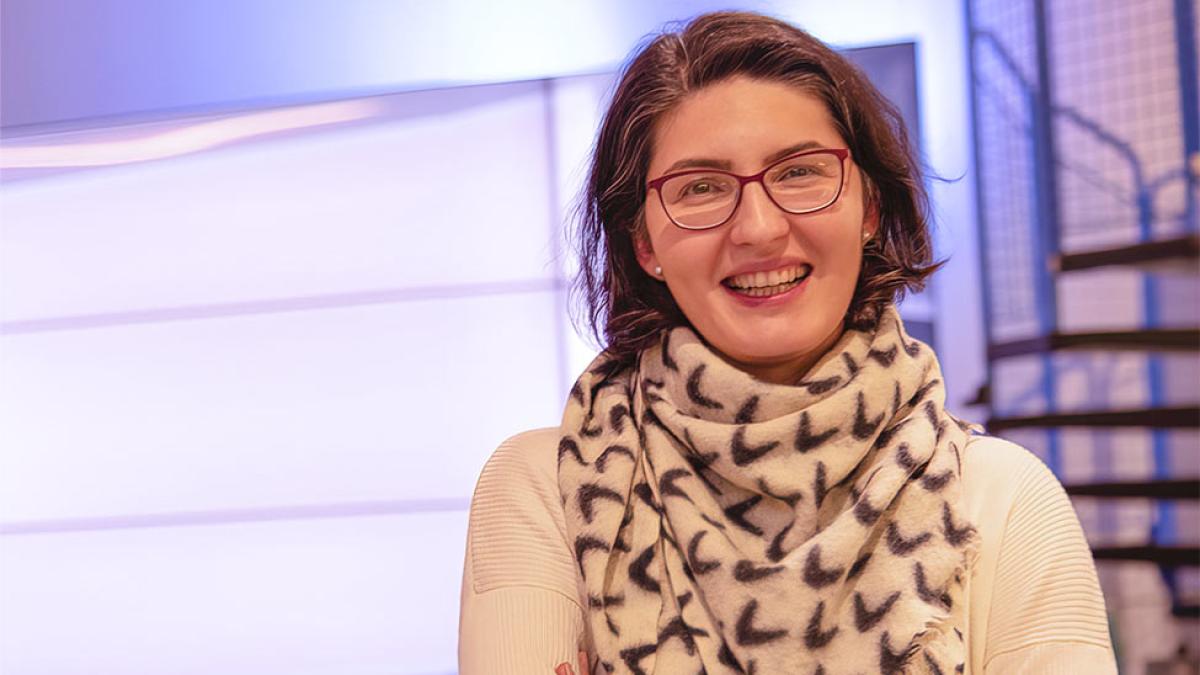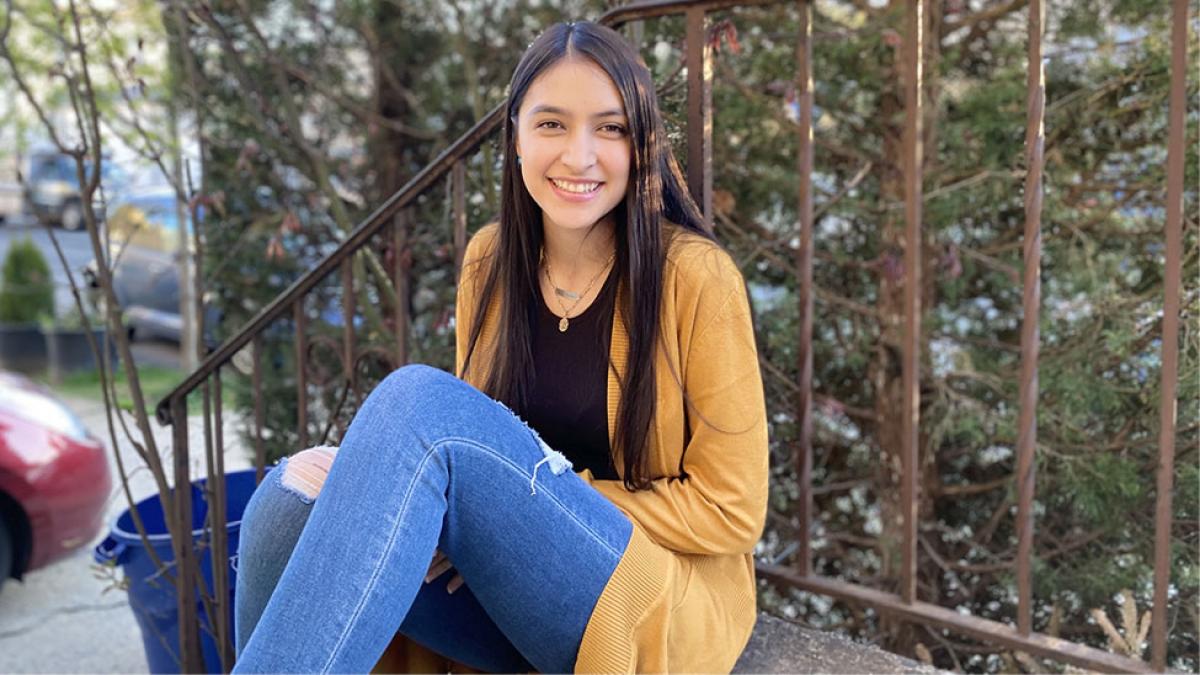Professor and NYC Design Factory director Andreea Cotoranu is teaching students how to solve tomorrow’s problems. In partnership with major corporations and international collaborators, students have pitched ideas like noise-absorbing drones, massive-scale food cooling systems, and a modern take on teen furniture design.
Elisabeth Haub School of Law at Pace University Among 99 Law Schools Recognized by the White House
The Biden Administration, in a virtual event that took place on Friday, January 28, recognized the Elisabeth Haub School of Law at Pace University. Haub Law was one of 99 law schools in 35 states and Puerto Rico who responded to the Attorney General’s Call to Action to the legal profession to address the housing and eviction crisis, and help increase housing stability and access to justice in their communities.
The Biden Administration, in a virtual event that took place on Friday, January 28, recognized the Elisabeth Haub School of Law at Pace University. Haub Law was one of 99 law schools in 35 states and Puerto Rico who responded to the Attorney General’s Call to Action to the legal profession to address the housing and eviction crisis, and help increase housing stability and access to justice in their communities. Representing the Biden Administration at the event were, Second Gentleman Douglas Emhoff, Attorney General Merrick Garland, Vanita Gupta, Associate Attorney General of the United States, Deputy Secretary of the Treasury Wally Adeyemo, Gene Sperling, Senior Advisor to the President, American Rescue Plan Coordinator, as well as Law School Deans, administration and students from across the country.
A statement from the White House and Department of Justice highlighted that over the past five months, more than 2,100 law students dedicated over 81,000 hours to serve over 10,000 households, based on a survey tracking the effort facilitated by Georgetown University Law Center Dean William Treanor and New York University School of Law Dean Trevor Morrison.
Noted on Haub Law’s response to the Call to Action by Attorney General Merrick Garland was the Law School’s strategic mission to create student opportunities to address access to justice (A2J) gaps. During summer 2021, the law school’s summer fellowship program funded several law students to work full-time at legal services organizations assisting client representation in housing and eviction matters, both in New York and across the country. This past fall 2021, in our inaugural A2J Lab class, an interdisciplinary team of 6 Haub Law and 6 Computer Science students designed the prototype for a web mobile application to help low income Westchester renters address rental habitability issues, including a crucial recordkeeping capability that can be used to collect evidence to defend tenants in eviction and rent non-payment proceedings. Further, this spring 2022, through a collaboration with community partners and Westchester courts, Haub Law students will engage in pro bono work assisting court referees in Housing and Veterans Court cases, among others, and Haub Law will sponsor its inaugural A2J Program and Workshop, specifically spotlighting Housing Law and Right to Counsel in Eviction, bringing community leaders, advocates, and students together to brainstorm about ways to address the housing crisis. Our many Centers and Clinics provide students and community members with continuous opportunities to address and help remedy the A2J gaps present. In addition to the experiential learning aimed at addressing A2J gaps, Haub Law addresses it on the curricular side as well with several courses, including our Access to Justice Seminar, and in the work our Centers do in bringing in speakers on housing and eviction matters. Further, there are many guided law student participants in research and writing projects focused on addressing housing access and the eviction crisis.
Lessons Learned From Defending Diversity In Higher Education
Today, whatever the shifting winds of politics, leaders still know that diversity matters. CEOs recognize that for their companies to remain globally competitive in an increasingly diverse world, they require a workforce that draws from that diverse talent pool. Military leaders still know that they require a well-educated, well-trained, and diverse officer corps.
A Special Donation to the Pace Cares Fund
Pace’s offices of Sexual and Interpersonal Wellness and Planning, Assessment, and Institutional Research contributed $1,000 to the Pace Cares Fund as an incentive to complete this year’s HEDS Sexual Assault Campus Climate Survey.
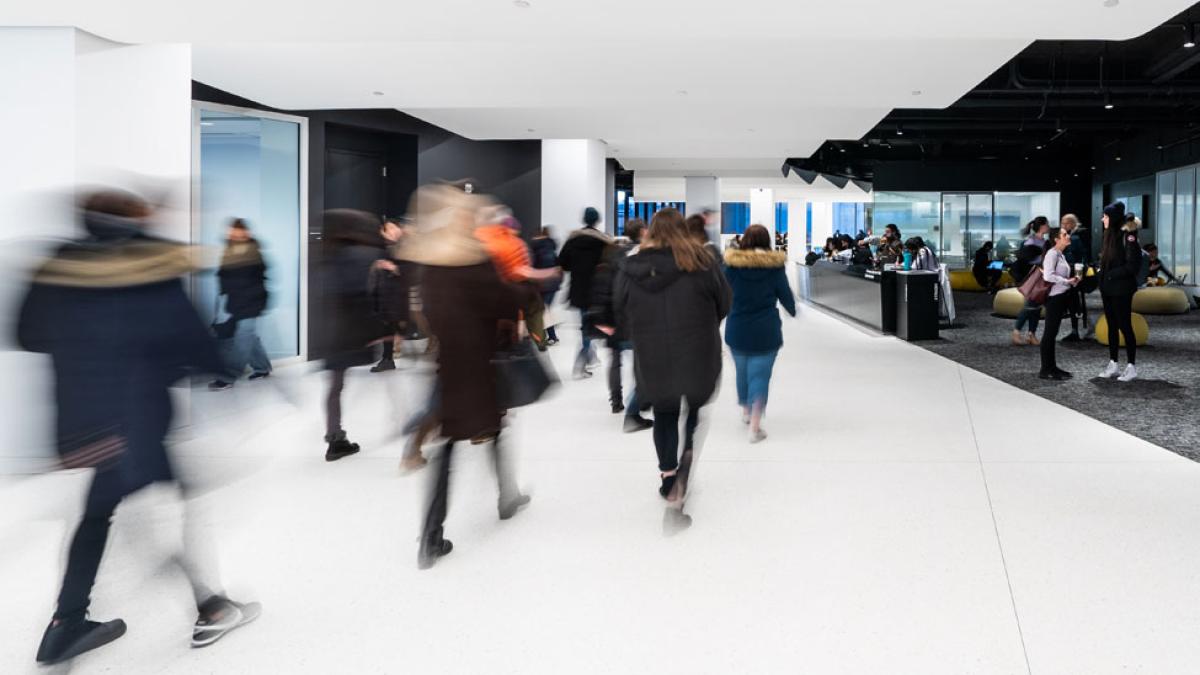
Each year, undergraduate students at Pace University are encouraged to complete the Higher Education Data Sharing Consortium (HEDS) Sexual Assault Campus Climate survey to help administrators at Pace understand perceptions of campus climate around unwanted sexual contact. This survey is used to gather data on experiences of sexual assault, perception of institutional responses to sexual assault, and understanding of campus resources and reporting procedures. The data collected from the survey is used to make targeted improvements for Pace University's prevention and intervention of sexual misconduct.
Oversight and distribution of the HEDS survey was led by a partnership between Pace’s Office of Sexual and Interpersonal Wellness (OSIW) and the Office of Planning, Assessment, and Institutional Research (OPAIR). Both offices look forward to having community conversations with Pace students, staff, and faculty about the data once it is available and analyzed.
This fall, as an incentive for students to participate in the HEDS survey, OSIW and OPAIR pledged to donate $1 for each completed survey to the Pace Cares Fund, which provides emergency financial relief to students who face unforeseeable economic hardships. Spectacularly, the offices were able to exceed their response rate goal with 954 survey responses. With the support of Pace’s Chief Diversity Officer Tiffany Hamilton, the offices were able to round the contribution total up to $1,000 given directly to the Pace Cares Fund.
This initiative would not have been as successful without the help of our staff, faculty, and students who increased awareness of the HEDS survey and encouraged participation in New York City and Westchester. OSIW and OPAIR would like to extend special thanks to the Division of Opportunity and Institutional Excellence; the offices of Housing and Residential Life; the Athletics Department; Faculty Council; the Women’s and Gender Studies Department; the peer educators of OSIW; the First Year Experience Office; and all the student organizations who supported with outreach. And last, but certainly not least, OSIW and OPAIR would like to especially thank each and every Pace student who used their voice to comment on sensitive content matter for the sustained health and well-being of our campus community.
More from Pace
School of Education student Guadalupe Ceja ’23 hasn’t officially started teaching yet, but her own experiences in the classroom and her recent New York State scholarship win are putting her at the head of the class.
Sports Marking major Eli Simmons Jr. ‘21 is making a name for himself through his clothing brand SVNCLO, a brand for everyone who knows that seven days is all you need to make a dream come true.
Pace University’s Actors Studio Drama School MFA Alumni return to Alma Mater for their long-awaited final bow
Pace University’s Actors Studio Drama School (ASDS) Master of Fine Arts Program today announced the homecoming of their acting, directing, and playwriting Class of 2021 with four consecutive weeks of live performances, beginning February 9, 2022.
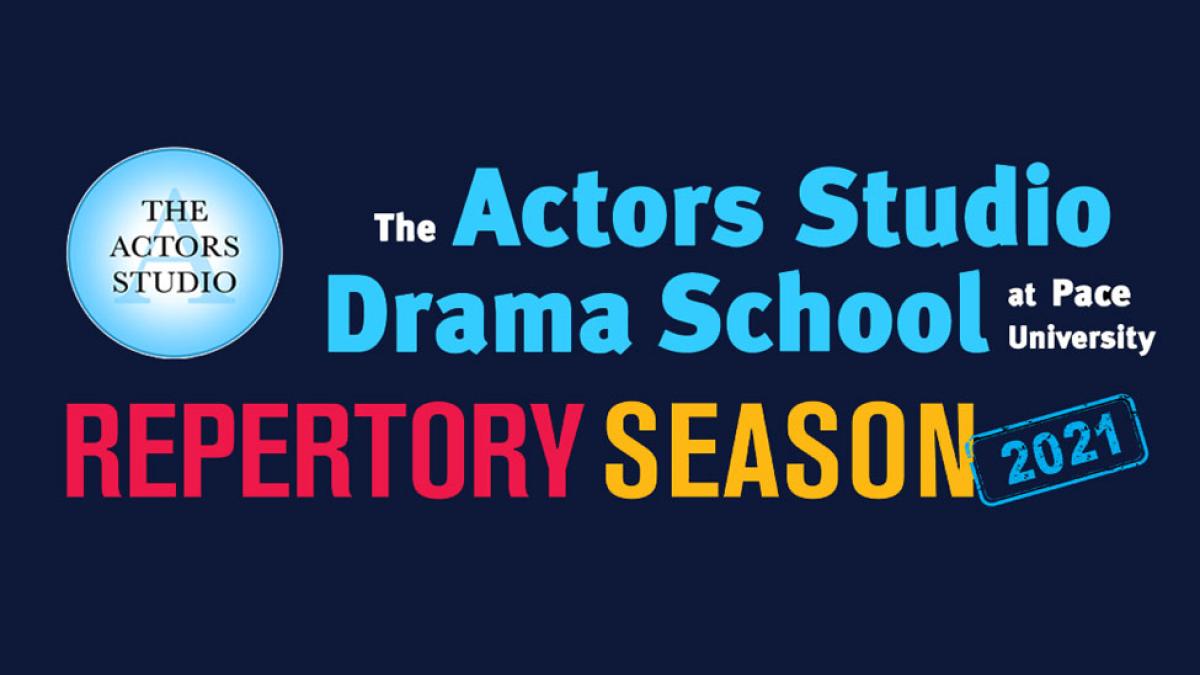
The Class of 2021 takes the stage with their talents in live, in-person performances
New York (Jan 27, 2022) – Pace University’s Actors Studio Drama School (ASDS) Master of Fine Arts Program today announced the homecoming of their acting, directing, and playwriting Class of 2021 with four consecutive weeks of live performances, beginning February 9, 2022.
“The repertory season has always been the culminating moment of celebration for graduating students. Over the last two years, the ability to have live performances has become even more significant because of the condition of the world and our industry. Our students have faced unfathomable junctures in their training, yet have remained steadfast and diligent, and we look forward to welcoming them back for the performances and the occasion which they so deserve,” says Grant Emerson Harvey, director of professional development, Actors Studio Drama School MFA program.
Following industry standards, as well as New York State and local COVID-19 safety protocols, ASDS welcomes in-person audiences at 70 percent capacity at the Repertory theater in lower Manhattan.
“I am so happy to finally share my work with the world for this Repertory Season. My talented cohort constantly inspires me to create new work for people of color and our LGBTQ+ communities,” said Kat Agudo, MFA Playwright, Class of ’21.
“This was many years in the making and I’m pleased to finally be doing this,” said Akilah-Aziza Gordon, MFA Actor, Class of ‘21.
“Getting to finally come together and perform these shows feels even more important and gratifying after the turmoil of these past two pandemic years,” said Anna Bikales, MFA Director, Class of ‘21
The four-week Repertory Season consists of ten productions directed by ASDS alumni Amanda Alch, Anna Bikales, Chelsea Lockie, and industry professional Peregine Heard. The season also includes an original play by ASDS alumnus Kat Agudo.
The acting company features ASDS alumni Maria Bechara, Delaney Duquesne, Akilah Gordon, Valerie Huntington, John Jacob, Rose Kanj, Ilan Kaplan, Eunji Lim, Thomas Little, Eden Ohayon, Deja Ross, and Ryan Joseph Swartz.
The creative team includes Set Designer Shawn Lewis; Projections Designer Robert Feffer; Sound Designer Sean Hagerty; Lighting Designer Ethan Steimal; Costume Designers David “DW” Withrow and Jennifer Paar; Props Design Brittany Loesch; The General Management company is Brierpatch Productions.
The Repertory’s production schedule is as follows:
- February 9–12 – “Revolt. She said. Revolt again,” by Alice Birch.
- February 16–19 – “Meteor Shower,” by Steve Martin.
- February 23–26 – “Have You Seen Gary Foster?” by Kat Agudo (original play) and “Final Placement,” by Mary Gallagher and Ara Watson.
- March 2–5 - “The Moors,” by Jen Silverman.
When: Wednesdays through Saturdays at 7:30 p.m.; Saturday matinees at 3:00 p.m.
Where: ASDS Repertory Theater, 80 Greenwich Street (between Rector and Edgar Streets), New York, NY, 10006.
Admission is free. Reserve your seat and get more information.
About the Repertory Season
The purpose of the Repertory Season is to facilitate a professional experience, as students in their graduating year work with professional designers, stage managers, production companies, and benefit from the response of real audiences. While many events and educational programs impacted by the COVID-19 pandemic that started in early 2020 were shifted to a successful online and nontraditional instruction, the Repertory Season, after a two-season hiatus, is now happy to be back live.
About the Actors Studio Drama School
Located at Pace’s New York City campus and housed within the Dyson College of Arts and Sciences, the three-year MFA program offers three distinct tracks: Acting, Directing, and Playwriting. The curriculum is built on the philosophy and the tradition of the Actors Studio and the foundation of the Stanislavsky System. Acting, directing, and playwriting, students are trained side-by side and guided by the pedagogical approach of our distinguished faculty, toward the discovery of their unique voice and full manifestation of their talent. Upon graduation, students receive the title of ‘Finalist’ at The Actors Studio and are invited to attend sessions there for one post-graduate year prior to auditioning for lifetime membership. Directing and Playwriting students are also invited to participate in the Playwright/Director’s Workshop in New York for their post-graduate year.
About Dyson College of Arts and Sciences
Pace University’s liberal arts college, Dyson College, offers more than 50 programs, spanning the arts and humanities, natural sciences, social sciences, and pre-professional programs (including pre-medicine, pre-veterinary, and pre-law), as well as many courses that fulfill core curriculum requirements. The College offers access to numerous opportunities for internships, cooperative education and other hands-on learning experiences that complement in-class learning in preparing graduates for career and graduate/professional education choices.
About Pace University
Pace University has a proud history of preparing its diverse student body for a lifetime of professional success as a result of its unique programs that combine immersive academics and real-world experiences. Pace is ranked the #1 private, four-year college in the nation for upward economic mobility by Harvard University’s Opportunity Insights, evidence of the transformative education the University provides.
Isabella D'Alesio '24: Italian Classical Ballerina Pursues a Career on the Legal Stage
Fluent in three languages and trained as a classical ballerina, Isabella D'Alesio moved from Italy to New York to complete her bachelor's degree. After spending some time as a paralegal at a large international law firm, her decision to pursue a career in law was solidified. Now a 1L at Haub Law, Isabella hopes to begin a legal career in the international/environmental law field. Learn more about Isabella, her path to law school, and her experience at Haub Law in this student spotlight.
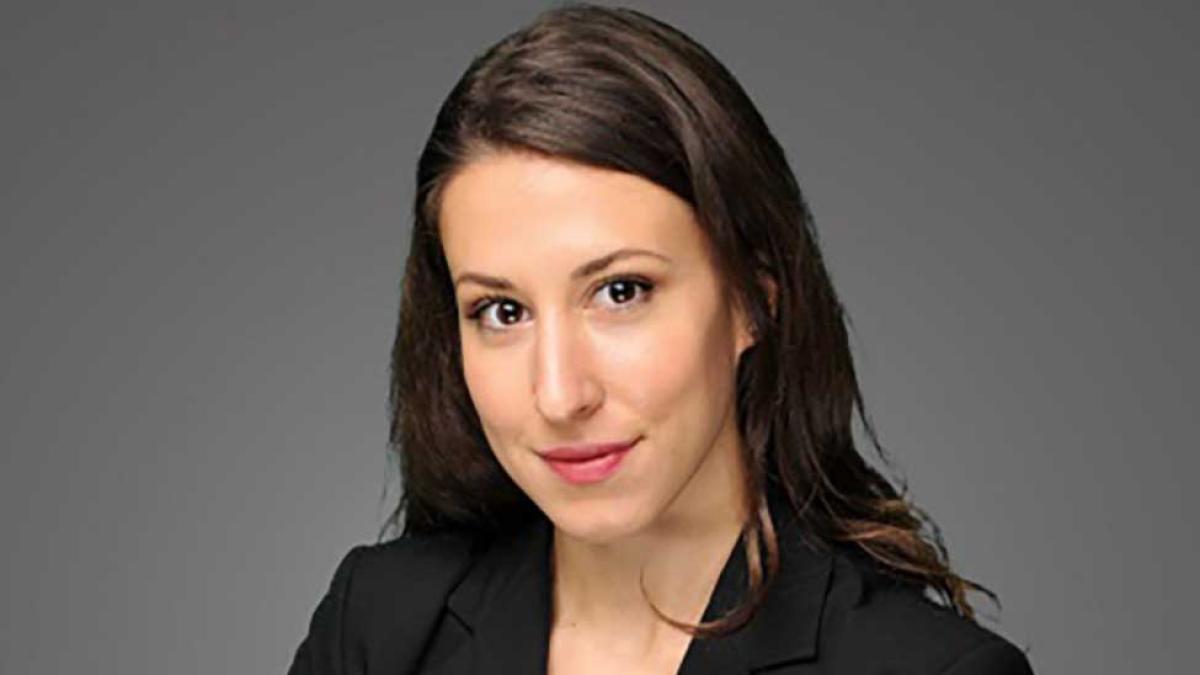
Fluent in three languages and trained as a classical ballerina, Isabella D'Alesio moved from Italy to New York to complete her bachelor's degree. After spending some time as a paralegal at a large international law firm, her decision to pursue a career in law was solidified. Now a 1L at Haub Law, Isabella hopes to begin a legal career in the international/environmental law field. Learn more about Isabella, her path to law school, and her experience at Haub Law in this student spotlight.
Tell us a bit about your background.
I was born and raised in Livorno, a city by the coast of Tuscany. I moved to New York for my Bachelor's degree at Fordham five years ago, where I pursued a degree in International Political Economy and a minor degree in Business Administration and French. All my family still lives in Italy, except for my brother and me – my brother also lives in New York. I am the first person in my family to go to Law School and the first woman to pursue a higher education. Both my father, Antonio, and my mother, Stefania, live in Livorno. We are all extremely close and always work together as a team. My family is extremely supportive of my choice to go to Law School – even though it is tough for us to be apart, they support my goals and believe in my aspirations. I would not be where I am today without them.
What inspired you to attend law school?
Since I can remember I have always had a passion for the practice of law, my main inspiration has been the work of international organizations. I have always had a burning interest in the work of the United Nations and its diplomatic relations between different countries, political systems, laws and cultures.
How did you make sure that you wanted to pursue a career in law?
To understand if law was something I was passionate about, after my bachelor ’s degree, I worked for a year at an International Law Firm in New York as a paralegal. I quickly understood that law was the path I wanted to take, and here I am! Due to Student Visa regulations, I am not allowed to work for the first two semesters of Law School, but I am eager and excited to start applying the material I am learning in the legal field.
What about Haub Law stands out to you?
There is such a high level of inclusion and camaraderie at the school that all students and faculty have with each other. Since the first days, I felt extremely comfortable and at ease, something that is rare for a law student, especially in their first year.
There is such a high level of inclusion and camaraderie at the school that all students and faculty have with each other. Since the first days, I felt extremely comfortable and at ease, something that is rare for a law student, especially in their first year.
Talk to me about your professors so far at Haub Law.
I have had a wonderful experience with my first semester professors. They expect a lot from us as law students, and although it can be demanding and stressful, it is extremely rewarding. The professor that has been the most inspiring figure for me in this first semester is my Civil Procedure professor, Michael Mushlin. His passion for the course and his dedication to his students has been remarkable. Civil Procedure is not by any means an easy class, but his enthusiasm has inspired me to dedicate myself to the law even further.
Have you thought about your goals after law school?
I hope to pursue a legal career in the International/Environmental field. I am fortunate enough to be able to speak Italian, English, and French. My dream is to work for an international organization or law firm and be able to use my legal experience together with my fluency in languages.
What are some of your hobbies outside of law school?
Growing up I spent all of my free time in the dance world, I was a classical ballerina for 17 years and continued classical and modern dance through College. Dancing, playing the piano and my love for music is still one of my favorite things to dedicate my free time to. When we don’t have too much law reading for class, which is very rare, I enjoy reading books from Isabel Allende. I also adore cooking and baking.
What would your advice be for current or future law students?
Believe in yourself. It is not going to be easy, but never doubt that you have the ability to make your dreams come true. It is not a bad thing to set high goals and standards for yourself, but remember to celebrate and be proud of every accomplishment, even if small.
Westchester in the Spotlight as HBO’s The Gilded Age Premieres Jan. 24
Pace University in Pleasantville was used as a film location and cast and crew basecamp. Seeking a variety of looks that would recreate 1880s New York, producers scouted Westchester County, where wealthy New Yorkers actually escaped city life during the Gilded Age, according to David Crockett, executive producer.
Hong Kong Risks Losing What Status it Still Has
Joseph Tse-hei Lee is a professor of history at Pace University in New York City.
Ensuring Your Biz Survives You
“Regardless of your level of wealth, you should have an estate plan,” says Bridget J. Crawford, who teaches federal income taxation; estate and gift taxation; and wills, trusts and estates at Pace University in White Plains, where she is the university distinguished professor of law at the Elisabeth Haub School of Law.
The Marketing Manager
President of Setter Stage Richmond Landicho ’20 interned twice for NBCUniversal: once for integrated marketing and then for the Late Night team. But it was a mistake he made that ultimately led to his success. Also? He’s a black belt in taekwondo. Yeah.


As an Honors College ambassador, Orientation Leader, PaceBound student ambassador, President of Setter Stage with ties to Universal Pictures at Pace and Filipino Youth International, Richmond Landicho ’20 certainly stays busy. He also recently completed two internships at NBCUniversal: one as an integrated marketing intern and another as a Late Night digital platforms intern. Not to mention his current position as a social media and digital content specialist with Design and Source Labs. Whew!
It was that fast-paced environment rife with opportunity that ultimately led Landicho to choose Pace. “I love the ambitious culture that the [University] fosters, especially within the Lubin School of Business,” he told us. “I am constantly inspired by the accomplishments of my friends and fellow peers, and thus, motivated to find my own success.”
Originally an arts and entertainment management major, Landicho switched to advertising and integrated marketing communications because it combined his creative flair with his logistical and business-oriented mindset, something that really appealed to him. “Whether I’m doing primary research for a project or thinking of a logo for a brand, I’m able to think laterally and vertically. I’ve always loved art growing up, and with marketing, I’m able to use my graphic design skills for the artistic, branding component of marketing, which is really amazing.”
It comes as no surprise that he’s worked as a mentor for countless students given the breadth of his skills, but it isn’t an easy task by any means. “It’s important for mentors to offer advice and share their experiences without forcing the decisions of the mentee,” Landicho explained, having cultivated his leadership skills over time. “I sometimes think mentors act as a flashlight in the dark, so that their mentee can find their own path to success.”
His personal creed, “No glory in the process,” is also a strong influence in his mentorship style. For him, it means that, “Even though the actions and efforts to accomplish a certain goal are often difficult and go unrewarded or unnoticed, keep on pushing through to meet that sense of glory in the end.”
That sort of humble mentality began to take shape during his time at NBCUniversal. “One time during my internship, I had no idea how to get started on a task. Being a stubborn new intern, I figured I would try my best to do the project without reaching out for help. It was a big mistake.”
Landicho realized he’d completed the task incorrectly and was very hard on himself for it, but his supervisor saw this as a teaching moment. “They reminded me to have a sense of humility in everything that I do. I learned that it’s completely okay to ask questions, and that not everyone knows everything all at once. I’m grateful for that experience, because now I don’t fear failure.”
Another highlight—this time when he worked for the Late Night team—was when he got a chance to tour the set where they film Saturday Night Live. “I remember at that moment how in awe I was that I was actually working for the shows that I’ve loved growing up, and that I was now doing work that actually contributed to those shows.”
Landicho certainly has a bright future ahead of him—one that he works hard to cultivate every day, much like this black belt in taekwondo, an immense achievement earned with the same dedication he pays to all the projects he works on. We can’t wait to see what he achieves next!
